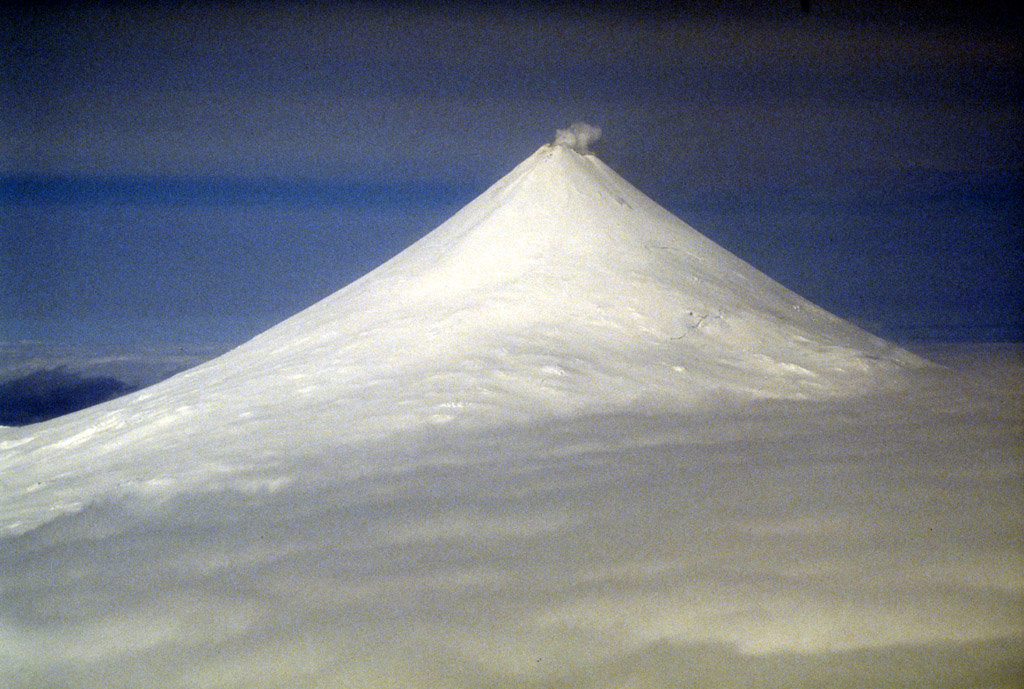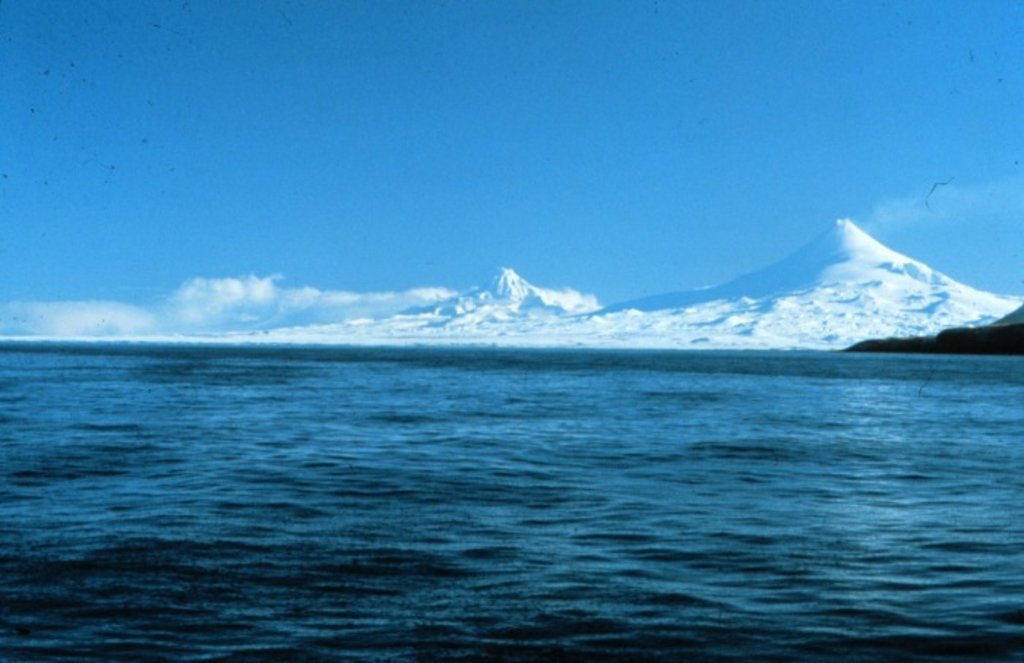Get PeakVisor App
Sign In
Search by GPS coordinates
- Latitude
- ° ' ''
- Longitude
- ° ' ''
- Units of Length

Yes
Cancel
Share ×

Scan the QR code and open PeakVisor on your phone
❤ Wishlist ×
Choose
Delete
A part of the larger Aleutian Arc, the Aleutian Range stretches from Chakachamna Lake outside of Anchorage to Unimak Lake at the tip of the Alaska Peninsula. The Aleutian Range includes all of the mountains on the Alaska Peninsula, but does not technically contain the partially submerged portion of the Aleutian Islands.

The Aleutian Range consists of mostly roadless, remote wilderness and isolated high-altitude peaks. Because the Aleutian Range lies within the Aleutian Arc, it contains a sizeable number of highly active volcanoes, including Makushin, Kanaga, Korovin, Great Sitkin, and Mount Okmok. Aleutian volcanoes are considered highly volcanic and are known to erupt often. In fact, two noteworthy Aleutian volcanoes, Mount Okmok and Mount Kasatochi, erupted in the summer of 2008. Both massive stratovolcanoes sent a column of volcanic ash over 50,000 feet into the air.
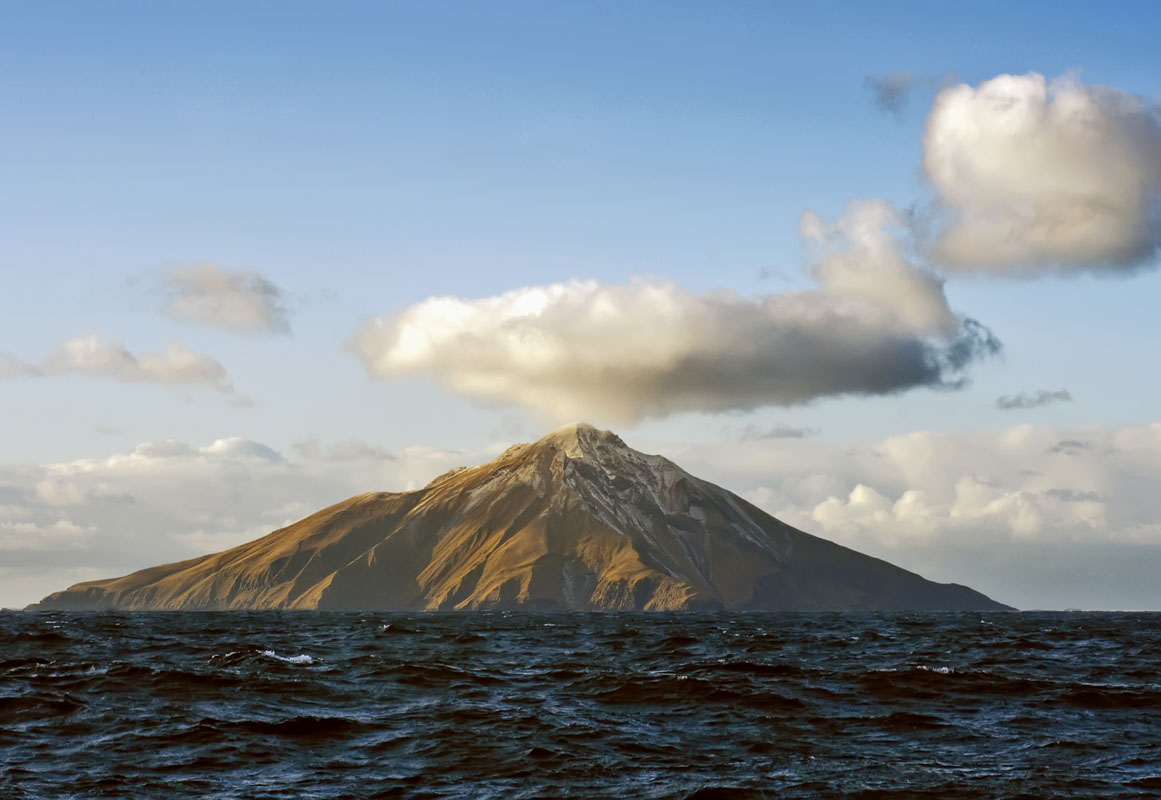
The core Aleutian Range can be divided into three subranges or mountain groups – the Alaska Peninsula and Unimak Island, Chigmit Mountains, and Neocola Mountains.
One of the most well-known, active volcanoes in the Aleutian Range, Mount Redoubt, is the highest point in the range and sits at the head of the Chigmit subrange in Lake Clark National Park and Preserve. The Chigmit Mountains make up the northeast end of the Aleutians and are bordered by the Tordrillo Mountains and Neacola Mountains. Aside from Mount Redoubt, the Chigmits also contain the extraordinary, glacier-covered, Mount Iliamna (also known as Iliamna Volcano), an active stratovolcano in Lake Clark National Park and Preserve.
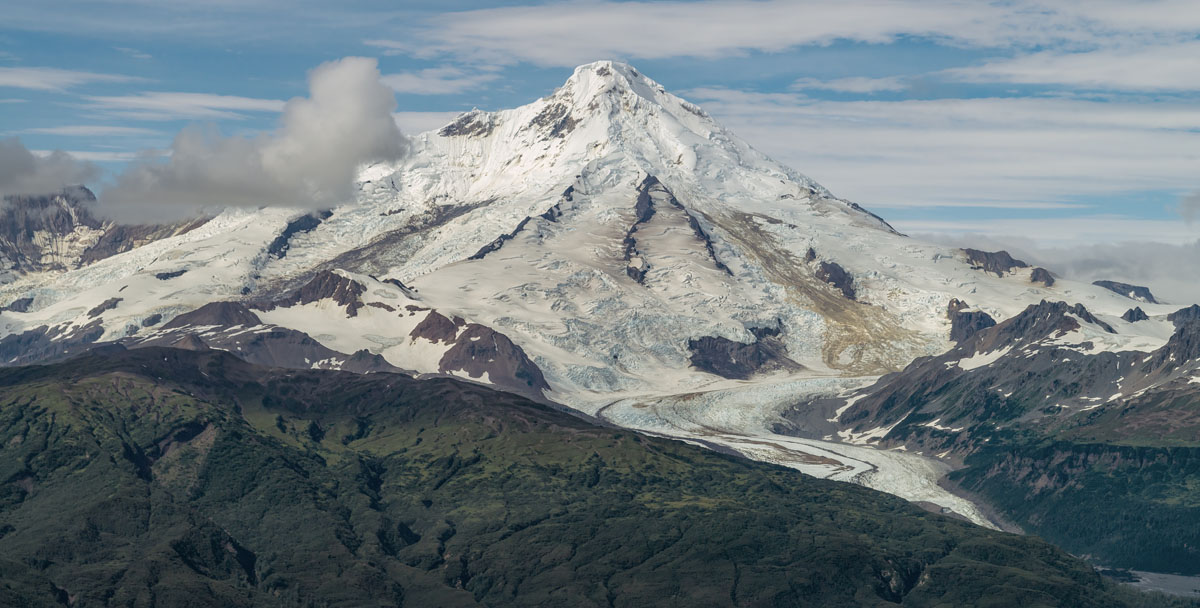
The Aleutian Range runs the entire length of the Alaska Peninsula and is protected by several National Parks and Preserves including Katmai National Park, Aniakchak National Monument and Preserve, and Becharof National Wildlife Refuge. The most notable peaks on the Alaska Peninsula include Pavlof Mountain, Mount Veniaminof, Mount Griggs, Mount Katmai, and Mount Douglas.The Unimak Island, which is the easternmost island in the Aleutians, is the ninth largest island in the United States and contains noteworthy stratovolcanoes like Pogromni Volcano and Shishaldin Volcano.
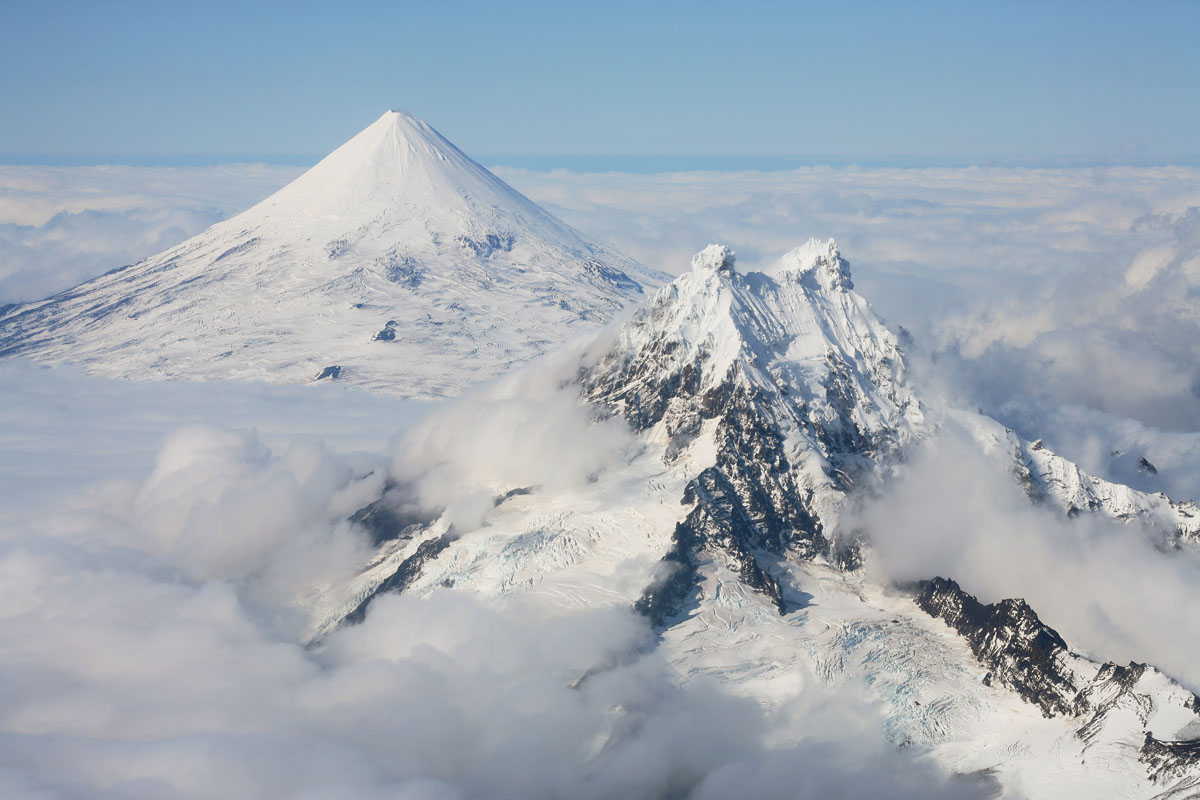
The Neocola Mountains are the northernmost subrange of the Aleutians and are incredibly remote. Despite offering several high-altitude summits and plenty of mountaineering potential, these craggy peaks see very little visitation, due to their inaccessibility and volatile weather. Mount Neocola is the unofficial name for the highest point in this subrange. Lake Clark Pass separates the Neocola and Chigmit ranges and serves as the primary aviation route between southcentral Alaska and western Alaska. A flight through Lake Clark Pass offers visitors the unique opportunity to experience the most remote alpine glaciers, snow-capped peaks, and winding rivers between two remarkable Aleutian subranges.
Aside from rugged alpine summits, the Aleutian Range is home to many glaciers and lakes. Lake Iliamna, the largest lake in Alaska, and Lake Clark are two of the most popular amongst locals. However, it’s important to note that access to the Aleutians and alpine lakes is extremely limited. There are very few roads within the range and most areas are only accessible by boat or plane. Generally, a visit to the Aleutians requires a chartered flight or boat ride from Anchorage or small, local villages. Needless to say, spending any amount of time exploring the remote wilderness within the Aleutians guarantees a truly wild, Alaskan experience.
Despite being exclusively accessed by boat or plan, Katmai National Park is arguably the most popular park in this region of Alaska. Several of the most prominent peaks in the Aleutian Range can be found in Katmai and along the Alaska Peninsula. This area is still incredibly remote, however, and a trip to Katmai means traveling to the heart of the Alaskan wilderness.
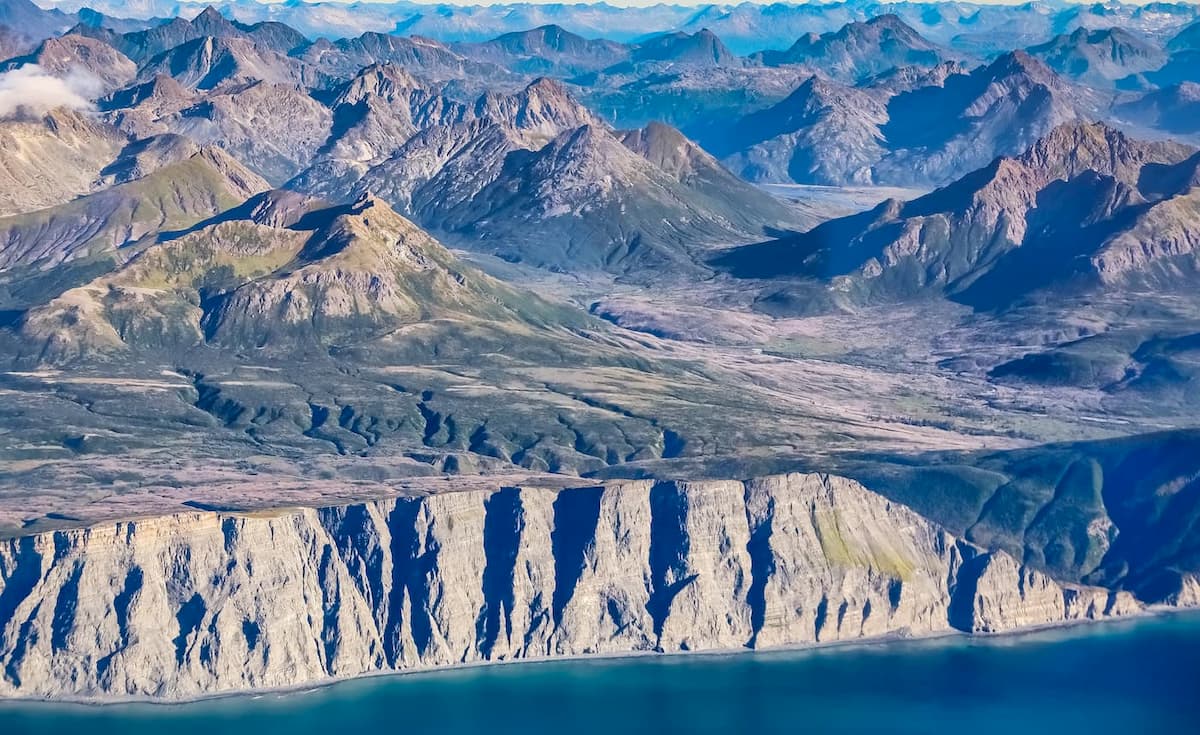
Brooks Camp, which sits at the mouth of the Brooks River, draws the most visitors to Katmai. People from around the world travel to Brooks Camp to observe brown bears as they plunk salmon from the river. Brooks Camp also serves as the starting point to several backcountry adventures in the park. Brooks Camp is also one of the most accessible options in the park.
There are less than five miles of maintained trails in Katmai, but the backcountry offers a nearly limitless amount of hiking, fishing, and kayaking (or canoeing) potential. Permits are not required in Katmai’s backcountry; however, advanced backpacking and survival skills are recommended.
Like Katmai, Lake Clark National Park and Preserve is an incredibly remote, wild Alaskan wilderness area that is packed with volcanoes, craggy summits, wildlife and alpine lakes. Visiting the park requires traveling by boat or plane – there are no roads to the park.
It's important to note that rather than trails, Lake Clark offers several long-distance, backcountry routes. In other words, Lake Clark National Park and Preserve is a trail-less wilderness. There is an infinite amount of backcountry camping, hiking, canoeing, and fishing in the park, but to enjoy it, you’ll need some familiarity with Alaskan terrain. There are no facilities, amenities, or designated campsites. If you’re hoping to visit Lake Clark National Park and don’t have extensive experience, there are some developed and maintained trails in the park near Port Alsworth and hirable guides that can help you plan a safe route or trip.
Port Alsworth, a tiny, remote village tucked within Lake Clark National Park, is the ideal basecamp for exploring the Chigmit and Neacola mountains. Both ranges can be access via a float or ski plan from Port Alsworth. Keep in mind, accessing Port Alsworth requires a short flight from Anchorage. Port Alsworth sits on the east shore of Lake Clark. There are no roads and very few designated trails in this area, but plenty of opportunity for anglers, experience backpackers, and mountaineers to experience quintessential, remote Alaskan wilderness. Port Alsworth isn’t teaming with amenities, but it does offer lodging, raft rentals, and visitor services for the surrounding park and designated scenic rivers.

King Salmon sits on the north bank of the Naknek River on the Alaska Peninsula and serves as the ideal getaway for exploring Katmai National Park and Preserve. There are no roads that lead to and from King Salmon, but seasonal jet services and smaller airplanes allow visitors from Anchorage to reach this remote, Alaskan town.
Visitors to King Salmon generally make their way to Katmai to view wildlife or explore the Valley of 10,000 Smokes. King Salmon also offers easy access to wildlife expeditions in Becharof National Wildlife Refuge, Alaska Peninsula National Wildlife Refuge, and McNeil River State Game Sanctuary.
King Salmon is also nearby popular, remote Katmai resorts like Brooks Lodge, Katmai Wilderness Lodge, Kulik Lodge, and Enchanted Lake Lodge. Each lodge offers a variety of amenities, as well as epic, backcountry excursions and wildlife viewing tours.
Explore Aleutian Range with the PeakVisor 3D Map and identify its summits.





